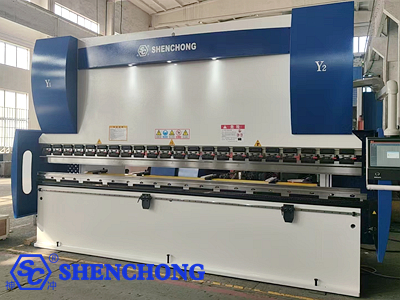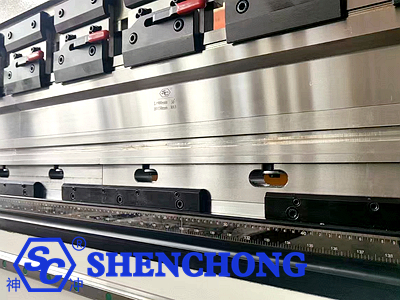
4mm metal sheet bending machine is a kind of equipment specially used for bending metal sheets (such as carbon steel, stainless steel, aluminum plates, etc.) with a maximum thickness of 4mm. Common types are electro-hydraulic CNC hydraulic press brake machines or electric hybrid servo press brake machines.

- Machine frame: welded structure, annealing treatment to eliminate internal stress, strong rigidity.
- Slider system: the upper die is fixed on the slider, and the slider moves up and down to achieve bending.
- Hydraulic system: pressurization is achieved through the hydraulic cylinder to control the movement accuracy and pressure of the slider.
- CNC system: control the synchronization of the back gauge and the slider, with high degree of automation and stable accuracy.
- Back gauge device: servo drive, precise positioning, support multi-axis (X, R, Z1/Z2) adjustment.
Mold part: standard molds and special molds can be configured to meet different bending requirements.
- Precise and stable: The electro-hydraulic synchronous control system ensures the synchronization of the slider and high bending accuracy.
- Energy-saving and efficient: Hybrid oil and electricity or servo drive saves energy and reduces noise, improving energy efficiency.
- Easy to operate: The CNC system supports graphic programming and simulated bending.
- Safety protection: Equipped with laser protection or photoelectric protection system to improve operator safety.
- Strong adaptability: It can adapt to various process requirements of different metal materials and bending angles.

We take the 200ton 4500mm CNC hydraulic press brake machine in the picture as an example to analyze the bending force.
- Bending angle: 90°
- Lower die V groove width: about 8 times the plate thickness (industry norm)
- Material width: full length 4500mm
Material Type | Thickness of the plate that can be bent over the entire length (reference) |
Q235 Carbon Steel | 4~5 mm |
Stainless Steel 304 | 3~4 mm |
Aluminum Plate | 6~7 mm |
Brass/Soft Metal | 6~8 mm |
- Q235 carbon steel: ≤4mm, full length bending
- Stainless steel 304: ≤3mm
- Soft metals such as aluminum plate: ≤6mm
- If thicker plates need to be bent, you should:
- Shorten the bending length
- Add a mold pressure auxiliary structure
- Or choose a larger tonnage (such as 250T, 300T) bending machine
- Determine the material and maximum thickness of the plate: if bending stainless steel, the tonnage needs to be increased appropriately.
- Choose the appropriate bending length: match the equipment length according to the maximum workpiece length.
- Pay attention to the system configuration: such as whether multi-axis backgauge, graphic programming, angle compensation, etc. are required.
- Evaluate the brand and after-sales service: preferably well-known brands and manufacturers with local after-sales support.
- Consider future scalability: such as whether to reserve automatic loading and unloading interfaces to adapt to automated production.
Model | Nominal pressure | Bending length | Control systems | Applicable materials | Features |
WEK-63T/2500mm | 63 tons | 2500mm | EL 15 / ESA S630 | Carbon steel ≤4mm | Entry-level, economical |
WEK-100T/3200mm | 100 tons | 3200mm | ESA S640 | Carbon steel/stainless steel | Common general-purpose |
WSK-125T/3200mm | 125 tons | 3200mm | EL 15 / EL 17 | More stainless steel | Strong type, suitable for complex bending |
WDK-170T/3200mm | 170 tons | 3200mm | ESA S860 / EL 19 | Stainless steel + deep bending mold | Advanced type, supports automation |
If you have specific plate information, machine configuration or processing technology (such as U-shape, Z-shape, R angle, flanging, etc.) requirements, we can further provide customized parameters or recommend machine models.